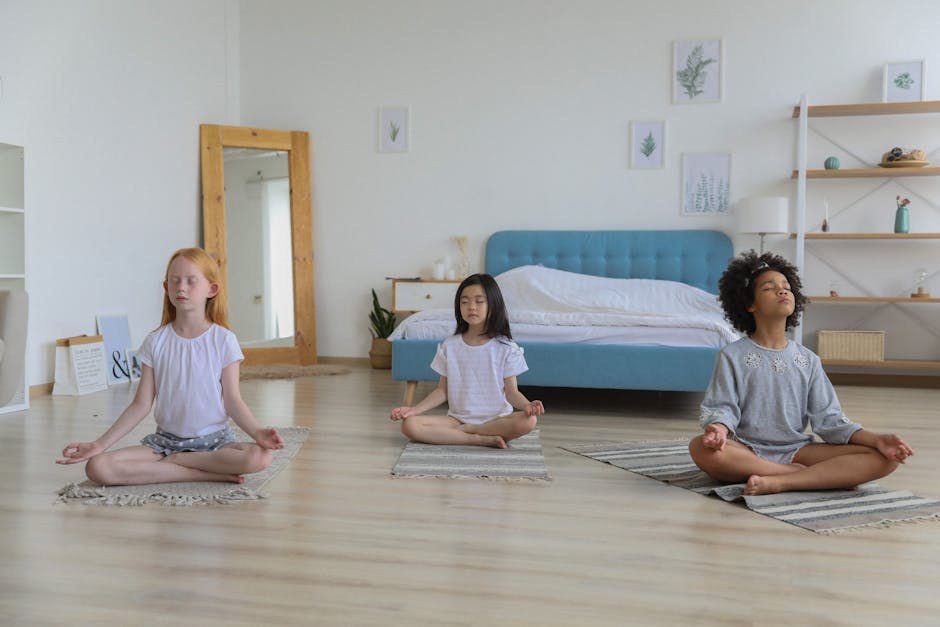Many couples quietly discover a surprising truth – being coupled does not automatically protect you from loneliness. You can share a bed, a calendar, even a last name, and still feel a private ache that something is missing. That ache has a name: loneliness. It doesn’t mean your relationship is doomed or that you are broken. It often signals that a bond needs fresh attention, clearer communication, and a return to the habits that once made you feel seen. This guide reframes the experience with care and practicality, exploring why loneliness shows up in committed love and how to mend the distance without shaming yourself or your partner.
Why togetherness can still feel solitary
People imagine that being in a serious partnership will eliminate loneliness – after all, there’s someone beside you. But intimacy is more than proximity. When connection frays, loneliness can seep into daily life like a slow leak. Below are common pathways that lead to the experience, each of which can be addressed with patience and clarity.
-
When your needs feel brushed aside. Feeling dismissed or neglected is a fast track to loneliness. If it seems like your priorities don’t matter, or your partner no longer notices what lights you up, emotional distance grows. The same thing can happen when affection and sexual closeness feel one-sided or sporadic – unmet desire quietly hardens into loneliness and a sense of being on the outside of your own relationship.

In these moments, you might question your worth and start pulling back to protect yourself. Unfortunately, withdrawal feeds the very loneliness you’re trying to escape. Recognizing the pattern is the first step; naming it out loud is the second.
-
When you aren’t sure what you actually want. It’s difficult to feel satisfied if your own relationship blueprint is fuzzy. Values, rituals, and boundaries act like the frame of a house – without them, it’s hard to feel settled. If you’re unclear about the kind of partnership you want, or if you discover mismatches in core beliefs and daily habits, loneliness can surface as a longing for something you cannot yet define.
Ask yourself what a good week together looks like. Consider shared interests, moral compasses, and the way you both handle conflict. If alignment is thin on the ground, the gap you feel may be less about affection and more about fit – a gap that gives loneliness space to grow.

-
When conversations go silent. No one can read a mind – not even the person who knows your coffee order by heart. When you stop voicing worries, desires, and disappointments, loneliness often follows. The absence of conversation doesn’t just hide problems; it creates them. Long stretches without honest dialogue can make two people behave like courteous roommates who share a Wi-Fi password rather than partners who share an inner life.
Silence may feel safer than a difficult talk, yet that safety is temporary. Over time, your inner world goes unshared, and loneliness takes root in the unspoken spaces.
-
When life storms hit one of you. Jobs change, families need care, bodies get tired, grief arrives without warning. A partner moving through stress or transition may have less bandwidth, even when love remains steady. That reduced availability can feel like rejection, and loneliness can swell in the space where attention used to be. It helps to remember that the distance is often about circumstance rather than affection – a distinction that doesn’t erase loneliness but does keep blame from crowding the room.

Support, patience, and small signals of presence can soften the edge here. So can the reminder that seasons change – and that you are on the same side of the problem, even when you’re standing a few steps apart.
Any one of these dynamics can make you feel like you’re living parallel lives under the same roof. Left unaddressed, loneliness can grow from a whisper to a weight. Addressed early – and with gentleness – it can become a motivator for reconnection rather than a verdict on the relationship.
How to bridge the emotional gap
Repair begins with small, repeatable actions. The aim isn’t to race toward a dramatic breakthrough but to restore a pattern of attention, honesty, and shared effort. The practices below are not quick fixes; they are choices to make, again and again, until the ground under your feet feels steady and loneliness loosens its grip.
-
Start the talk you’ve been avoiding. Begin with what you feel and what you need, not with a list of your partner’s mistakes. “I feel far away when our evenings are spent on separate screens” lands differently than “You never pay attention.” Specifics help your partner understand the shape of your loneliness – and clear requests help them respond. Try choosing a calm moment, setting aside distractions, and sharing one or two concrete examples along with one change you’d like to try together.
When you encounter defensiveness, slow down rather than push harder. Reflect back what you’ve heard – “You feel overwhelmed and worry you’re failing” – so the conversation feels like a collaboration, not a courtroom. Open dialogue won’t solve everything overnight, but it breaks the isolation that feeds loneliness.
-
Resist the urge to retreat. Loneliness often tricks you into hiding – you stop making plans, stop reaching out, stop saying yes. The more you withdraw, the stronger loneliness becomes. Counter the impulse by deliberately placing yourself in connection’s path. Join a friend for a walk. Eat lunch away from your desk. Say yes to the neighbor’s casual invite. These are not distractions from your relationship; they are antidotes to the way loneliness narrows your world.
Connection outside the couple doesn’t diminish the bond; it nourishes it. You return home with stories, energy, and perspective – all of which help you show up more fully.
-
Give your week a structure that supports you. Unstructured time can become a magnet for rumination, and rumination is a close cousin of loneliness. Fill your calendar with simple, meaningful anchors: a class you’ve wanted to try, a volunteer shift, a personal project that stretches you. Purposeful activity interrupts the loop of “Why am I so alone?” and replaces it with moments of skill, mastery, and contribution.
This isn’t about staying busy just to avoid feelings. It’s about designing a rhythm that keeps your life larger than the problem – a rhythm that makes room for joy even while loneliness is present.
-
Invite fresh faces into your orbit. New friendships have a way of waking up sleepy parts of us. When you meet someone who shares your passions – the musician who loves the same obscure albums, the runner who knows every trail in town – you feel seen in a new light. That sense of recognition can shrink loneliness and remind you of how connection feels when curiosity is alive.
Consider communities that match your interests: book clubs, language exchanges, gardening groups, pickup sports, faith circles, or creative workshops. Genuine friendships grow from repeated contact and shared effort, so be patient with the early awkwardness. Each small “hello” tills the soil where belonging can take root.
-
Treat yourself like someone you love. Self-criticism promises to keep you sharp; in reality, it keeps you small. When you’re already navigating loneliness, harsh inner commentary amplifies pain. Swap the running critique for kinder self-talk and restorative routines. Sleep on time, eat food that fuels you, move your body, and give yourself a hobby that asks nothing of you except attention.
Compassion is not indulgence – it is maintenance. Speaking to yourself with respect makes it easier to speak to your partner with respect, too. Even a simple phrase can help: this is hard, and I’m allowed to take care of myself. Small acts of care rebuild the emotional stamina that loneliness erodes.
-
Share the load with a trusted person. Sometimes the first listener shouldn’t be your partner – not because you’re keeping secrets, but because you need a soft place to think out loud. A longtime friend, a sibling, a mentor, or a counselor can help you sort what’s yours from what’s the relationship’s. Speaking your story into a compassionate ear reduces shame, which is the fuel that keeps loneliness burning.
If you choose a professional, you’re not admitting defeat; you’re hiring a guide. An outside perspective can help you translate your loneliness into clear, doable steps and give you tools for conversations that stall. Support expands your options beyond fight or flight.
-
Look for the root, not just the symptoms. In most cases, loneliness is a signal pointing to a deeper issue: misaligned expectations, unspoken resentments, mismatched affection styles, conflicting routines, or external stress that drains attention. The goal is to identify the pattern that keeps recreating the distance, then change that pattern together.
Try a simple audit. When do you feel closest? When does the gap widen? What do you both do on the days connection feels easy? Capture those conditions and repeat them on purpose – a weekly cook-together, a morning check-in, an evening walk without phones. Removing frictions and adding micro-rituals can starve loneliness of oxygen.
Practical scripts and rituals that help
Because loneliness thrives in vagueness, specificity is powerful. Borrow words until you find your own: “I miss you. Could we set aside twenty minutes after dinner just to talk?” or “I’m feeling distant and would love to choose a small routine we can count on.” These sentences extend a hand rather than point a finger. If the conversation heats up, pause and say, “I want us on the same team – can we take a breath and try again?” The tone matters as much as the content; warmth invites warmth.
Rituals anchor attention. Consider designing a few that suit your life: a Sunday plan-the-week chat, a midweek coffee on the balcony, a shared playlist for long drives, a phone-free hour before bed. These repeatable actions are tiny, but they stitch days together. Over time, they create a predictable harbor – the very environment where loneliness finds it harder to settle.
Understanding the emotion without blaming it
It helps to remember that loneliness itself is not an enemy; it’s a messenger. It tells you that connection – emotional, physical, intellectual, or spiritual – is thinner than you want. Rather than attacking yourself for feeling it, treat loneliness as useful information. Ask what kind of connection is missing. Is it conversation? Touch? Shared projects? Rest? Each answer suggests a different next step. When you respond to the message, the volume of loneliness usually drops.
Also, notice how your body experiences the emotion. For some, loneliness feels like a lump in the throat; for others, like heavy shoulders or a hollow chest. Gentle regulation – a walk around the block, deep breathing by an open window, stretching on the floor – can make it easier to speak kindly and listen well. Regulation doesn’t replace repair, but it makes repair possible.
Staying patient while change takes shape
Change in relationships rarely looks cinematic. It usually arrives as small, unglamorous choices made consistently. You try a new check-in; you keep it going. You ask for a hug when the day caves in; your partner puts the phone down. You return the favor without keeping score. These are modest acts – but they accumulate. Bit by bit, the story you tell yourself about your relationship shifts from “I’m on my own” to “We find our way back.”
While you practice new habits, expect flare-ups. Old patterns tug hard – a tense exchange, a busy week, a missed ritual – and loneliness may knock again. That doesn’t mean you’ve failed. It means you’re human. When setbacks happen, revisit what worked, say what you need, and keep the focus on collaboration. You and your partner are building something – and building takes time.
When the fit is the issue
Sometimes, honest work reveals that core values or life directions differ more than you realized. If your visions of family, faith, money, or daily rhythm pull in opposing directions, loneliness can persist even when communication improves. Recognizing this is tender, not tragic. It gives both people the truth needed to decide how to proceed – to keep negotiating, to find creative compromises, or to acknowledge that the kindest path may be a different arrangement. Whatever the outcome, the effort to understand and address loneliness will serve you well; it teaches clarity, courage, and care.
Bringing it all together
Feeling lonely in a relationship is more common than most people admit. It can stem from brushed-aside needs, fuzzy expectations, quieted conversations, or seasons of stress. It can also be reduced – sometimes dramatically – by speaking up, stepping out of isolation, building supportive routines, welcoming new friendships, practicing self-respect, seeking wise counsel, and addressing root patterns rather than symptoms. None of these actions are grand; together, they’re powerful.
You don’t have to pretend you’re fine, and you don’t have to wait for a sweeping transformation. Start where you are. Name your experience. Ask for what would help this week. Offer what you can give without resentment. Repeat the small rituals that keep you facing the same direction. As you do, the texture of daily life changes – the air feels warmer, the room feels friendlier, and the long shadow of loneliness begins to recede.
One last reminder – kindness fuels everything here. Be gentle with yourself when you stumble and generous with your partner when they try. Choose presence over perfection, curiosity over certainty, and repair over winning. In that climate, loneliness has fewer places to hide, and love has more room to breathe.